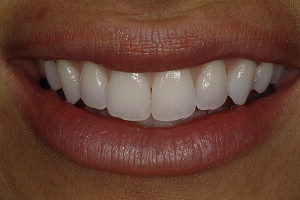High-quality aesthetic restorations that look great, function ideally, and last can only be predictably produced through implementation of excellent communication techniques and systems between the doctor and ceramist. With the availability of technology and the Internet, it is now easy to involve the laboratory via digital photographs. This article challenges one to begin including the laboratory early in the process and routinely use reliable techniques to transfer clinically significant information to the laboratory bench.
High-quality aesthetic restorations that look great, function ideally, and last can only be predictably produced through implementation of excellent communication techniques and systems between the doctor and ceramist. Often, communication to the laboratory is only thought about at the end of an appointment when the laboratory prescription is being filled out. With the availability of technology and the Internet, it is now easy to involve the laboratory via digital photographs. This article challenges one to begin including the laboratory early in the process and routinely use reliable techniques to transfer clinically significant information to the laboratory bench. It is easy to complete a great case once in a while, but only through developing a system and working together with a quality-conscious ceramist, can a dentist achieve real aesthetic success with every case. Setting the goals with the patient is important and can be a valuable source to review throughout case construction. Including the laboratory in these goals is an essential part of the equation, and reviewing these goals with the patient after completion of the case can be valuable in determining the success or failure of a particular case.
Photography
The first and most logical step is to document cases properly through quality photographic views. A single-lens reflex digital camera with a basic ring flash and 50 to 100 mm lens should be used. Having the proper camera system is necessary to create consistent results. The American Academy of Cosmetic Dentistry (AACD) has developed a photography guideline that is helpful in viewing and examining the aesthetic properties of a case. The 12 AACD-required photographs are an excellent starting point toward successful communication ( Figs. 1–3 ). Properly exposed and framed photographs allow the ceramist to see what materials and techniques are necessary to create the final result. Additional photographs to consider beyond these would be shade reference views and lips in repose or at rest. Theseare valuable views to determine the final length of the central incisors, which is typically 2 to 3 mm should be displayed beyond the edge of the upper lip ( Fig. 4 ). Lastly, it is important that all the photographs are taken with the teeth well hydrated. A tooth that is dehydrated will have a higher value and chroma than a hydrated one. These photographs set the foundation for all successful dentist/ceramist teams.





